-
120 vs. 140 radiator tested!
As far as I can tell, HWLabs were the first to step the radiator-game up to a format that is designed for 140-mm-fans rather than the 120-mm-fans that have become pretty much the standard by now. Black Ice Stealth GT 140's (and 280's and 420's) were the first radiators I ever saw available in this format. Seeing them, I was immediately intrigued and wondered how much performance gain the step up from 120 to 140 might bring.
So, naturally, I decided to try it out. Which brings us to...
120 vs. 140 Radiator-Test
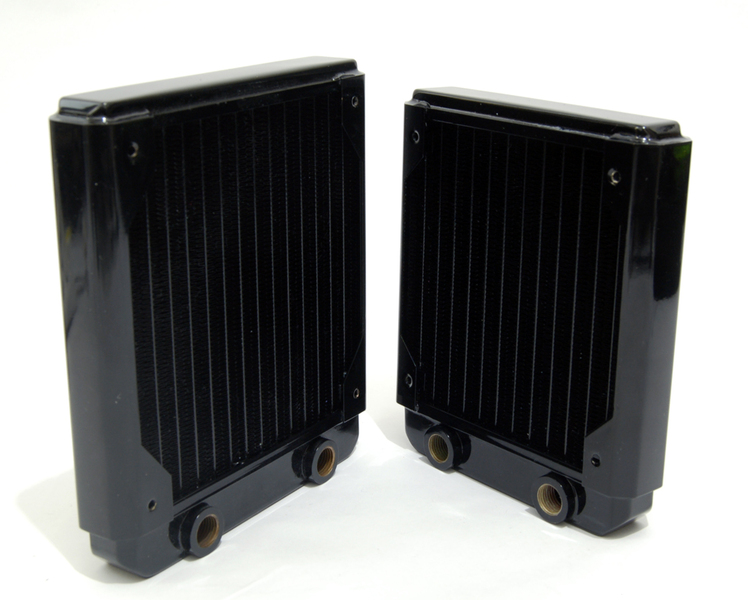
I got a hold of a Black Ice GT 140 as well as a Black Ice GT 120. These two radiators are very comparable since they have identical fin density, material etc.
On a side note, I have to mention how beautifully manufactured these radiators are. The finish and overall appearance is just gorgeous.
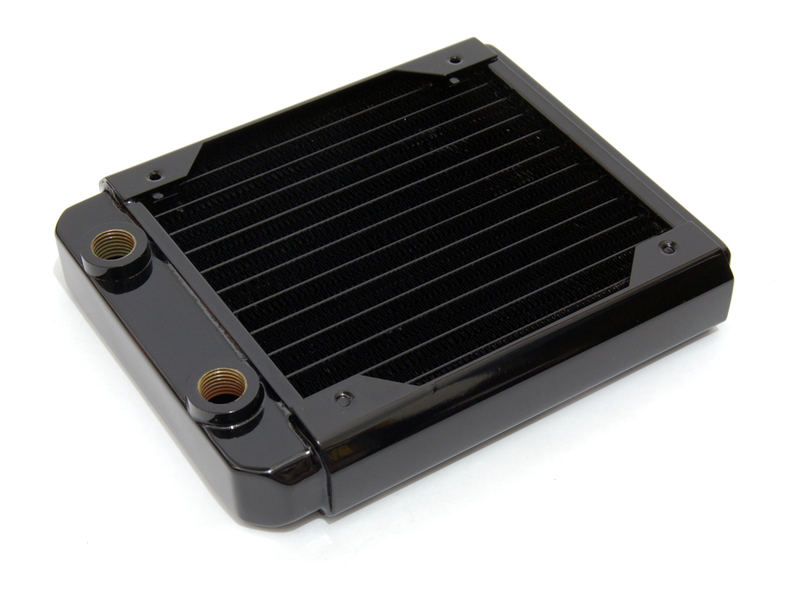
Testing Methods: The Basics
If you've seen any of my previous articles, you'll be familiar with this by now.
Here's the hardware used in testing:
- Q6600 Prozessor @ 1.5V
- EK Supreme
- Asus P5E WS Pro Mainboard
- Laing DDC 1T+ (Swiftech MCP355) Pump with EK X-Res Top
- Corsair HX 620W PSU
- T-Balancer bigNG plus Sensorhub
- 2x analogue temperature sensors (measuring water temperature)
- 3x digital temperature sensors, measuring ambient temperature
To get the temperature results, I load the CPU for 65 minutes using Prime95. The first 45 minutes are just for warm-up. I collect all of the relevant temperatures in 5 second intervals in a log file and average all of the data out for the last 20 minutes of the test run.
Testing Methods, The more complicated part...
I don't know if this saying exists in English, but translated directly from German it goes like this: "You can't compare apples and oranges."
Well, comparing a 120 vs. a 140 radiator is a lot like comparing apples to oranges. Whenever we compare the performance of two components, we try to keep all factors other than that component equal. So, for example, if you want to test one waterblock versus another one, you obviously have to use them on the identical CPU, with identical heat load and testing methods, otherwise the comparison is pointless.
The problem with the radiators is quite simply that one is made for 120-mm-fans while the other is made for 140-mm-fans.
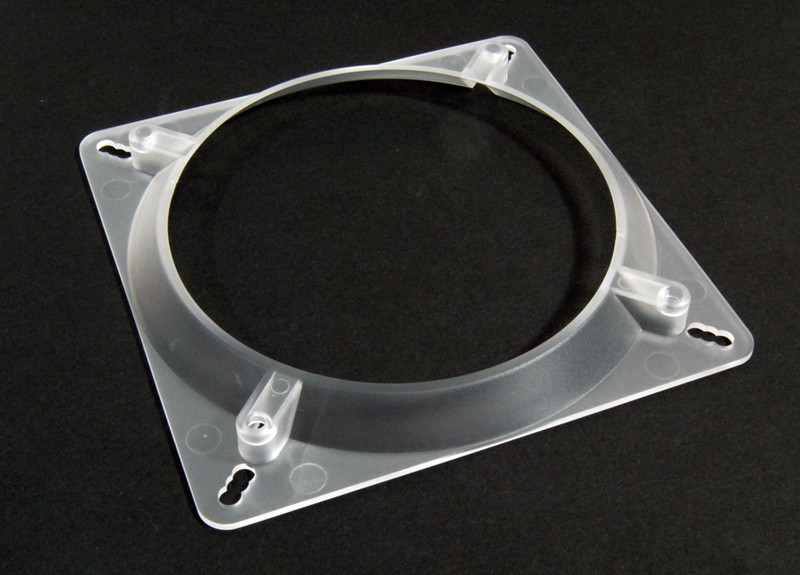
Shown above is a fan-adapter that connects the 120 with the 140 format. I got this together with an Aerocool Silver Lightning fan. This adapter allows me to install 120-mm-fans to the 140-mm radiator and vice versa. Unfortunately, that doesn't solve the problem of comparabilty.
Here are my thoughts on different options for comparing the two radiators:
Using an identical fan with identical rpm
This is the first and most obvious choice. If I were comparing two radiators of the same size, I would, of course, test both of them with the same fan at the same speed. Using the adapter shown above, I could do the same with this comparison.
Problem: A 120-mm-fan won't cover the entire surface of the larger radiator while a 140-mm-fan will produce more airflow while being more quiet than a 120-mm-fan (i.e. the noise/performance ratio would be unrealistiv for the 120 radiator). Additionally, the fan adapter, while being very flat, will act as a shroud and thus skew the results some more.
Using a right sized fan for each radiator
Again, on the face of it, this might seem an obvious choice: Use a 140-mm-fan for the larger radiator and a 120-mm-fan for the smaller one. After all, those are the sizes they were designed for.
Problem: Ultimately, this would be a comparison of the different fans as much as a comparison of the different radiator sizes. After all, not all fans are equally efficient and the results wouldn't tell us whether one of the radiators simply performs better due to a more effective fan or due to it's size.
Use fans of the right size and with identical cfm (airflow)
Theoretically (if I had the required equipment), I could use two different fans and set both to speeds where they produce identical airflow. That way, I could compare the two different radiator's performances with identical amounts of air moving through them.
Problem: Apart from the fact that I don't have the necessary equipment and the problem of static pressure being another thing to factor in, this testing method would show interesting results that have almost nothing to do with how the radiators are used in practice. After all, many users simply set their fans to the noise level that they want. The fact that 140-mm-fans can potentially move more air while remaining quieter than 120-mm-fans might be one of the great strengths of a 140 radiator (at least among friends of the silent pc).
Use fans of the right size and adjust them to identical nosie level
Taking into consideration what I just asserted above, it would make sense to choose two fans and then adjust them to identical noise levels. That would result in a good comparison for silent-enthusiasts, right?
Problem: Again, this would be a test of the quality of the used fans as much as the different radiators. After all, some fans manage to push lots of air and remain relatively quiet while others can be annoyingly noisy without being effective.
So, now that I've come to the conclusion that no possible comparison can be absolutely fair in every respect, what the hell do I do?
Well, I decided that I just have to accept the fact, that no comparison can be flawless. Just like a two-dimensional map of the world can never be free of some kind of distortion and you simply have to use different maps for different purpouses, I will test different options to try and get "the big picture".
The Fans
I used four different fans for the testing.
Two 120-mm-fans: Nanoxia FX-1250 at 1030 rpm and Scyhte Kama FLEX at 1500 rpm.
And two 140-mm-fans: Yate Loon D14SL-12 at 900 rpm and Sharkoon System Fan Midrange at 1200 rpm.
I did a test-run with each fan on each radiator. I used the adapter to attach the fans to the radiator of the "wrong size", which looks like this:
120 fan on 140 rad:
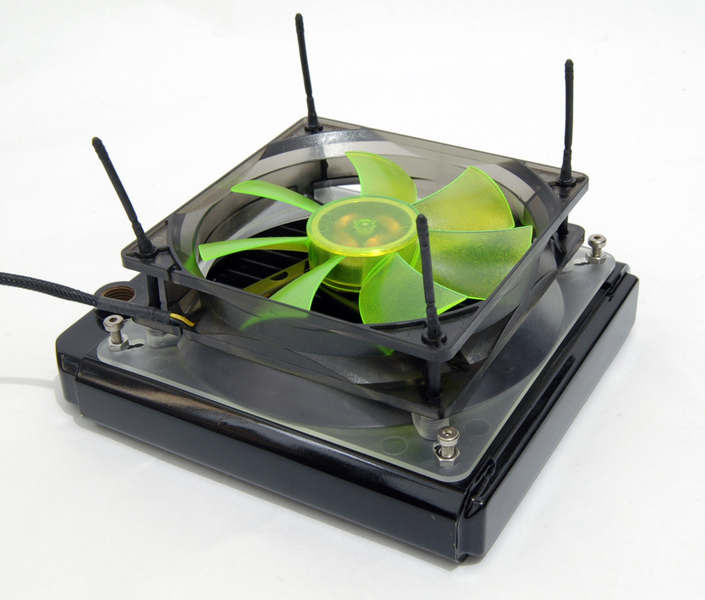
140 fan on 120 rad:

Results
Now let's (finally) get to the results:
First, the water-temperatures for each radiator-fan combination. All the results are shown as the difference between water and ambient temperature.
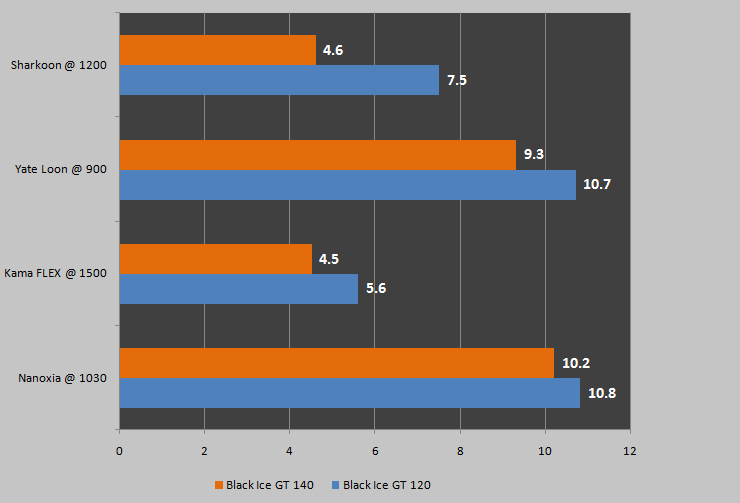
As we can see, the temperatures are significantly lower with the larger radiator in every instance. Considering that I only used a single radiator and the advantag will accumulate with larger radiators (280, 420 etc.), the achieved differences are quite impressive.
Next, let's take a look at how this affects the CPU-Temperature. Again, the results shown are the CPU minus the ambient temperatures.
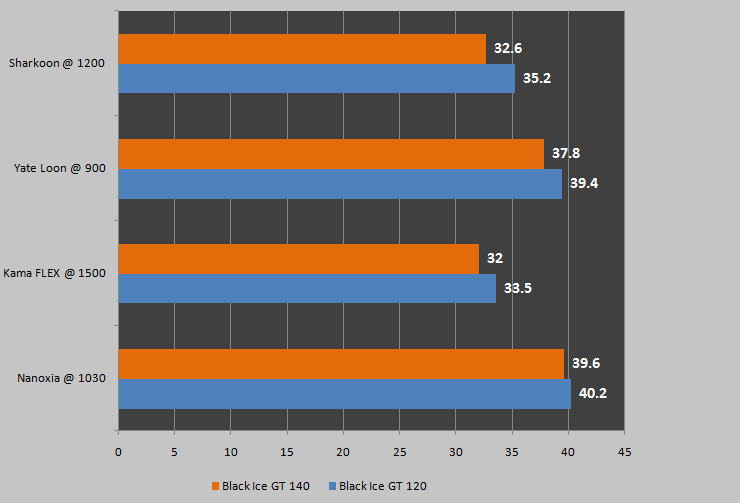
Depending on the used fan, the 140 radiator gains between 0.6 and 2.6 degrees over the 120 radiator. Not bad for a single radiator, methinks.
Finally, a comparison of the fans of "the right size" for each radiator. I simply grouped them as high rpm and low rpm.
The results show water- minus ambient temperature.

This comparison still shows a clear advantage of the 140 radiator, even though the fans used on the smaller radiator were set to higher rpm.
Conclusion
In conclusion, I must say that I'm quite surprised at how much of an advantage those extra 20 millimeters of diameter bring about. It's clear that a radiator in the 140-mm format can get you better cooling results at equal or even lower noise levels than you can achieve with a radiator in the 120-mm format.
At least for silent-enthusiasts, this alone is reason enough to dish out the extra cash for a larger radiator.
Hope you liked this article. Questions and comments welcome as always!
Cheers,
Shane
 Posting Permissions
Posting Permissions
- You may not post new threads
- You may not post replies
- You may not post attachments
- You may not edit your posts
-
Forum Rules












 Reply With Quote
Reply With Quote

Bookmarks